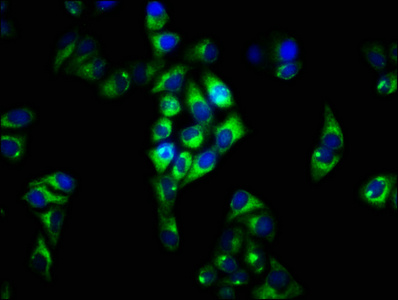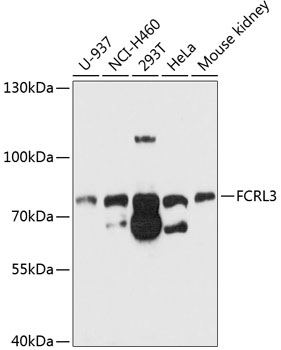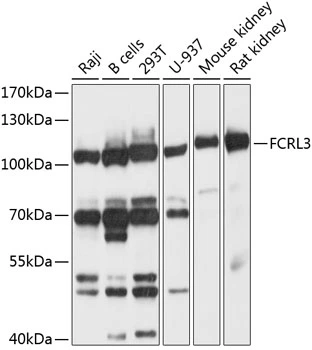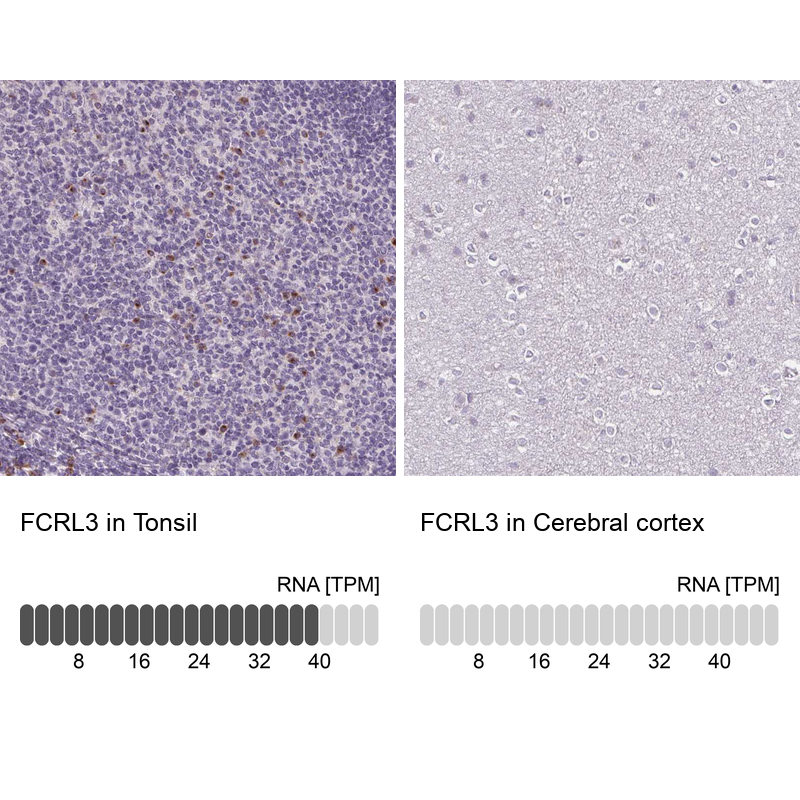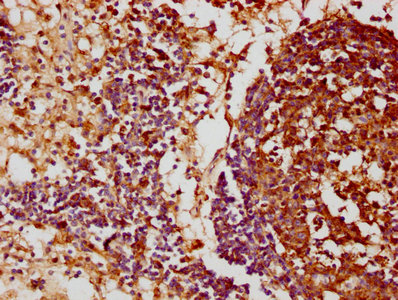
IHC image of CSB-PA853475LA01HU diluted at 1:100 and staining in paraffin-embedded human lymph node tissue performed on a Leica BondTM system. After dewaxing and hydration, antigen retrieval was mediated by high pressure in a citrate buffer (pH 6.0). Section was blocked with 10% normal goat serum 30min at RT. Then primary antibody (1% BSA) was incubated at 4°C overnight. The primary is detected by a biotinylated secondary antibody and visualized using an HRP conjugated SP system.
FCRL3 Antibody
CSB-PA853475LA01HU
ApplicationsImmunoFluorescence, ELISA, ImmunoHistoChemistry
Product group Antibodies
ReactivityHuman
TargetFCRL3
Overview
- SupplierCusabio
- Product NameFCRL3 Antibody
- Delivery Days Customer20
- ApplicationsImmunoFluorescence, ELISA, ImmunoHistoChemistry
- CertificationResearch Use Only
- ClonalityPolyclonal
- ConjugateUnconjugated
- Gene ID115352
- Target nameFCRL3
- Target descriptionFc receptor like 3
- Target synonymsCD307c; Fc receptor homolog 3; Fc receptor-like protein 3; FCRH3; fcR-like protein 3; hIFGP3; IFGP family protein 3; IFGP3; immune receptor translocation-associated protein 3; immunoglobulin superfamily receptor translocation associated protein 3; IRTA3; SH2 domain-containing phosphatase anchor protein 2; SPAP2
- HostRabbit
- IsotypeIgG
- Protein IDQ96P31
- Protein NameFc receptor-like protein 3
- Scientific DescriptionPromotes TLR9-induced B-cell proliferation, activation and survival but inhibits antibody production and suppresses plasma cell differentiation. Enhances activation of NF-kappa-B and MAPK signaling pathways in TLR9 stimulated B-cells (PubMed:23857366). Has inhibitory potentional on B-cell receptor (BCR)-mediated signaling, possibly through association with SH2 domain-containing phosphatases. Inhibits cell tyrosine phosphorylation, calcium mobilization and activation-induced cell death induced through BCR signaling (PubMed:19843936). Regulatory T-cells expressing FCRL3 exhibit a memory phenotype, are relatively nonresponsive to antigenic stimulation in presence of IL2 and have reduced capacity to suppress the proliferation of effector T-cells (PubMed:20190142, PubMed:19494275).
- ReactivityHuman
- Storage Instruction-20°C or -80°C
- UNSPSC41116161

